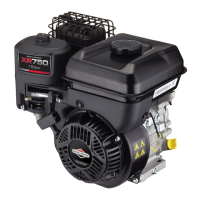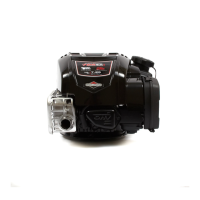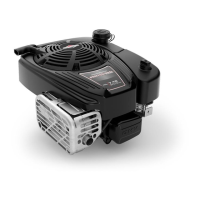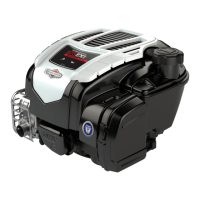55
4
9
Inspect Cylinder
1. Remove oil seal and discard. Using a
plastic scraper, remove all traces of head
gasket and sump gasket material.
• Visually check cylinder for cracks,
stripped threads, and bore damage.
Bore damage, if not severe, may be
corrected by reconditioning or resizing.
• If cracks are found, replace the cylinder.
• Stripped threads can sometimes be
repaired using a helicoil, but if multiple
holes have thread damage, replace the
cylinder.
2. Using a straight edge, check across
cylinder head mounting surface for
distortion (A, Figure 9-1). If mounting
surface is distorted more than 0.004”
(0.1mm), the cylinder must be replaced.
• Using Telescoping Gauge #19485 and
Dial Caliper #19199, measure the
diameter of the bore.If necessary,
recondition or resize the bore as
described below.
• Take two measurements (90° apart) at
the top, center, and bottom of the piston
ring travel (B).
• Compare measurements to the standard
cylinder bore size provided in Section 12
- Engine Specifications.
Reconditioning Bore
If cylinder bore is within specification and shows
no signs of scoring or other damage, it can be
reconditioned using a rigid hone with finishing
stones to restore the proper crosshatch angle.
The correct crosshatch of approximately 45
° (C)
ensures proper lubrication and piston ring break-
in.
NOTE: IT IS MOST IMPORTANT THAT THE
ENTIRE CYLINDER BE THOROUGHLY
CLEANED AFTER HONING.
Resizing Bore
If the cylinder bore is worn more than 0.003”
(0.08 mm) oversize, or is 0.0015” (.04 mm) out of
round, it must be resized.
Always resize to exactly 0.020” (.51 mm) larger
than standard bore size. Done accurately, the
service oversize rings and pistons will fit perfectly
with proper clearances.
Use the stones and lubrication recommended by
the hone manufacturer to produce the proper
sizing and finish.
NOTE: IT IS MOST IMPORTANT THAT THE
ENTIRE CYLINDER BE THOROUGHLY
CLEANED AFTER HONING.
Cleaning Cylinder
1. Wash the cylinder thoroughly with
kerosene or other commercial solvent.
2. Wash cylinder again using a stiff brush
with soap and hot water.
3. Rinse cylinder thoroughly with hot running
water.
4. Repeat washing and rinsing until all traces
of honing grit are gone.
NOTE: Honing grit is highly abrasive and will
cause rapid wear to all of the internal
components of the engine.
When cylinder has been thoroughly cleaned, use
a clean white rag to wipe the cylinder bore. If
honing grit is still present, it will appear as a grey
residue on the rag. Re-wash and rinse entire
cylinder, then check again. When there is no
trace of honing grit on the rag, the cylinder is
properly cleaned. Oil the cylinder bore to protect
the surface.
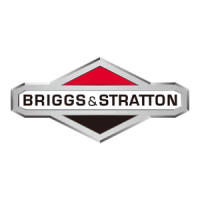
